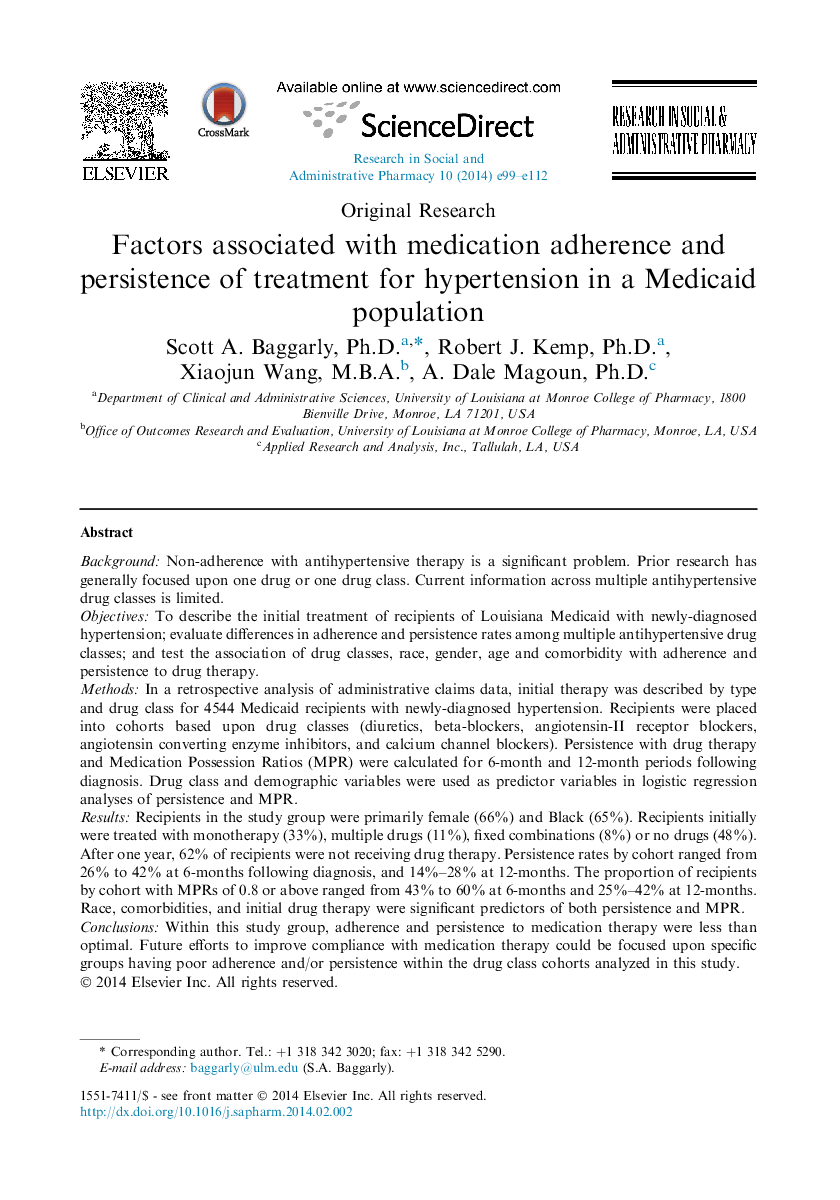| کد مقاله | کد نشریه | سال انتشار | مقاله انگلیسی | نسخه تمام متن |
|---|---|---|---|---|
| 2508371 | 1557750 | 2014 | 14 صفحه PDF | دانلود رایگان |
BackgroundNon-adherence with antihypertensive therapy is a significant problem. Prior research has generally focused upon one drug or one drug class. Current information across multiple antihypertensive drug classes is limited.ObjectivesTo describe the initial treatment of recipients of Louisiana Medicaid with newly-diagnosed hypertension; evaluate differences in adherence and persistence rates among multiple antihypertensive drug classes; and test the association of drug classes, race, gender, age and comorbidity with adherence and persistence to drug therapy.MethodsIn a retrospective analysis of administrative claims data, initial therapy was described by type and drug class for 4544 Medicaid recipients with newly-diagnosed hypertension. Recipients were placed into cohorts based upon drug classes (diuretics, beta-blockers, angiotensin-II receptor blockers, angiotensin converting enzyme inhibitors, and calcium channel blockers). Persistence with drug therapy and Medication Possession Ratios (MPR) were calculated for 6-month and 12-month periods following diagnosis. Drug class and demographic variables were used as predictor variables in logistic regression analyses of persistence and MPR.ResultsRecipients in the study group were primarily female (66%) and Black (65%). Recipients initially were treated with monotherapy (33%), multiple drugs (11%), fixed combinations (8%) or no drugs (48%). After one year, 62% of recipients were not receiving drug therapy. Persistence rates by cohort ranged from 26% to 42% at 6-months following diagnosis, and 14%–28% at 12-months. The proportion of recipients by cohort with MPRs of 0.8 or above ranged from 43% to 60% at 6-months and 25%–42% at 12-months. Race, comorbidities, and initial drug therapy were significant predictors of both persistence and MPR.ConclusionsWithin this study group, adherence and persistence to medication therapy were less than optimal. Future efforts to improve compliance with medication therapy could be focused upon specific groups having poor adherence and/or persistence within the drug class cohorts analyzed in this study.
Journal: Research in Social and Administrative Pharmacy - Volume 10, Issue 6, November–December 2014, Pages e99–e112
